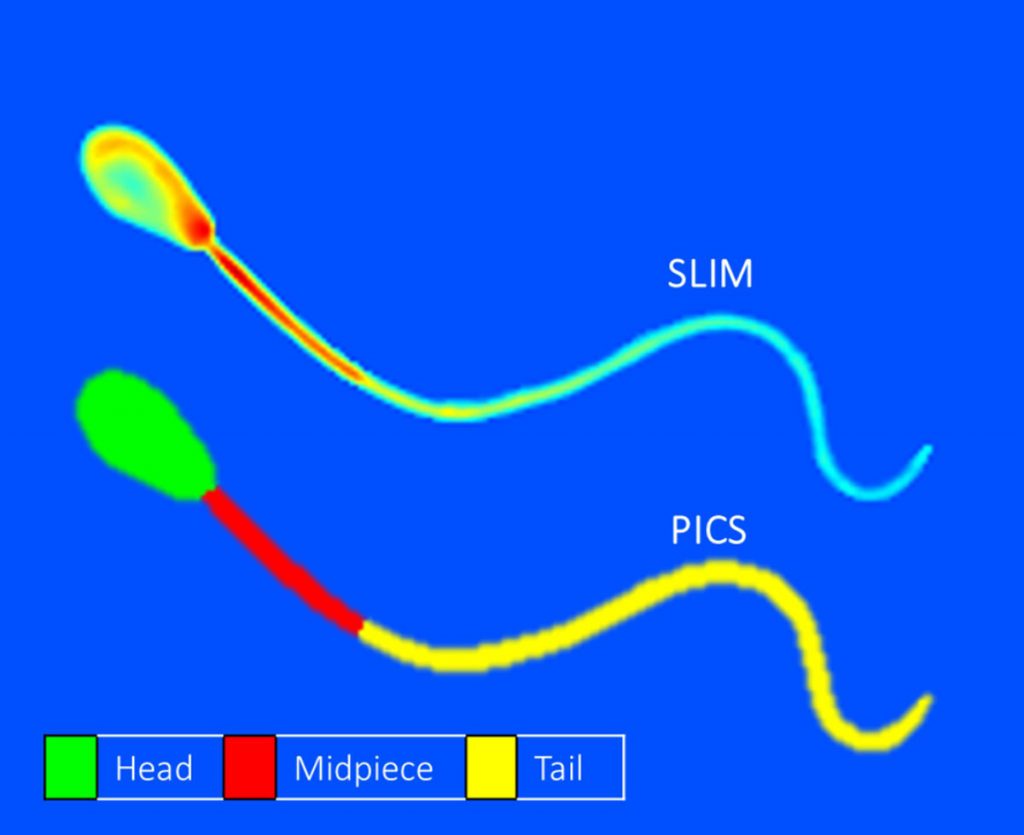 MBM trainee Mikhail Kandel recently published an article on his research into using label-free imaging and artificial intelligence to help predict reproductive outcomes. The technique determines the potential fertility of sperm samples in cattle and may help improve technology for facilitating reproduction in humans.
MBM trainee Mikhail Kandel recently published an article on his research into using label-free imaging and artificial intelligence to help predict reproductive outcomes. The technique determines the potential fertility of sperm samples in cattle and may help improve technology for facilitating reproduction in humans.
Kandel collaborated with Gabriel Popescu’s Quantitative Light Imaging (QLI) lab and labs in the Department of Animal Sciences (UIUC) on the project. The goal was to develop dairy cattle that would be resistant to heat and diseases in tropical environments, which would help developing countries increase their food production.

Researchers needed to identify which sperm samples work best for in vitro fertilization in order to develop the desired traits in cattle. The label-free imaging technique developed in the QLI lab determined which qualities within the sperm made them fertile.
“We knew from the fertilization experiments which sperm samples worked. We used our imaging technique to understand what parameters were important for success,” Kandel explains. “We saw that the relationship between the size of the head and the tail of the sperm is an important parameter for fertility.”
Future research will try to improve the speed of the technique, as sperm can move quickly. “For many years, we have developed various techniques for label-free imaging knowing that we had to give away molecular specificity,” Popescu said. “However, our newly developed phase imaging with computational specificity brings back the molecular specificity via AI, which is harmless and works on live cells. The applications are limitless, but one that truly benefits from absence of chemical stains is the assisted reproduction, as described in this collaborative study.”
The article has been published in the Proceedings of National Academy of Sciences (PNAS).
More on this discovery via Beckman Institute >>

